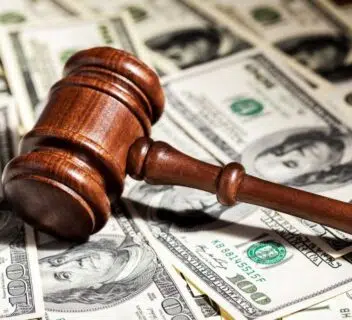How to Determine Fault in a Car Accident: Your Essential Guide
Determining fault in a car accident is crucial for handling damages and insurance claims. This guide covers the steps and evidence needed to determine fault in a car accident, which will help you determine fault in a car accident and ensure that you can make a strong argument for receiving fair compensation.
Key Takeaways
- Determining fault in car accidents is essential for assigning financial responsibility for damages and injuries, relying on evidence such as witness statements, photographs, and police reports.
- Understanding negligence, particularly comparative and contributory negligence, is crucial in assessing fault; the former allows for partial recovery, while the latter bars claims if a plaintiff has any fault.
- Gathering evidence immediately after an accident, including physical evidence and witness statements, is vital to establishing liability and aiding insurance investigations.
Understanding Fault in Car Accidents
In the context of car accidents, establishing who is at fault is a critical step in deciding which party bears the cost for damages and injuries incurred. This determination of fault directly affects who will be financially liable for expenses such as vehicle repairs and medical treatments. Prior to any compensation being awarded, it’s essential that this responsibility be accurately assigned.
The task of determining fault falls upon courts and insurance companies, which examine various elements beyond just the accident itself. Evidence gathered from those driving at the time of the incident, testimonies provided by witnesses, imagery captured through photographs or video recordings, along with tangible proof obtained from where the mishap occurred, are all scrutinized. Established case law frequently plays a significant role in informing these judgments.
The process involved in pinpointing who was responsible isn’t simply about assigning blame. Rather, it entails an exhaustive review of every piece of evidence available to arrive at a reasoned conclusion. Disputes over liability often arise during this phase due to its contentious nature—lawyers may fiercely represent their clients’ interests by challenging opposing claims regarding who bears fault for the collision.
What is Fault?
In the realm of car accidents, fault denotes who is legally responsible for an accident’s occurrence. This liability often stems from negligence, which occurs when someone does not exercise the appropriate level of care that a reasonably prudent individual would under similar conditions. Running a red light or neglecting to yield at a pedestrian crossing are textbook instances where such negligence can result in being at fault for an automobile incident.
The process of establishing who bears liability necessitates examining each involved driver’s behavior against what is considered reasonable action by an ordinary person. Difficulties in proving fault emerge when individuals deny their role in causing the accident or when multiple persons have played a part, complicating matters significantly. Such disputes and diverse interpretations offered by various authorities add layers of complexity to pinpointing who holds responsibility for a car accident.
Why Fault Matters
The process of determining fault is crucial in affecting the outcomes of insurance coverage claims and the ensuing compensation. When a driver is deemed at fault, their insurer typically bears the financial responsibility for any harm sustained by others involved in an incident. This liability may encompass vehicle restoration, healthcare expenses, and additional incurred costs. Conversely, within jurisdictions that uphold a no-fault policy, individual insurance providers compensate for their client’s damages regardless of who was to blame. Establishing fault remains vital when dealing with substantial injury claims.
When there is contention over who is at fault, it can lead to insurance companies rejecting claims or proposing settlements that don’t fully reflect what claimants are entitled to. The degree to which each driver is found responsible also plays into settlement figures adjudicated in court cases where juries must weigh these considerations carefully. Henceforth, demonstrating who was at fault stands as a key factor guaranteeing victims equitable reimbursement for damages they have suffered.
Types of Negligence: Comparative vs. Contributory
Grasping the various forms of negligence is essential when it comes to identifying who is at fault. Negligence typically falls into two classifications: comparative and contributory, both carrying distinct consequences for establishing fault and awarding compensation. The challenge in pinpointing fault frequently stems from the behavior exhibited by all involved drivers and disparate perceptions of what occurred.
Official accounts, such as police reports and issued traffic citations, play a significant role in deducing culpability since they record the incident’s specifics while potentially pointing out infringements on traffic regulations. Insurance companies utilize methodical approaches to ascertain responsibility accurately so that any financial restitution provided aligns with justice.
Comparative Negligence
Comparative negligence allows for the assignment of fault as a percentage, enabling victims to recover damages even if they are partially at fault. This system evaluates and quantifies the fault of each party involved in the accident.
For example, in a scenario where Jane rear-ends John, but John was illegally double-parked, the jury might find John 40% liable for the accident. If John’s damages are assessed at $10,000, Jane would only pay $6,000, reflecting her 60% liability, which means she has effectively paid less due to John’s share of liability.
This method ensures that compensation is proportional to the degree of fault, and it is commonly used in many states.
Contributory Negligence
Contributory negligence is a strict rule that prevents any compensation if the claimant has even a minimal role in causing the accident.
This principle applies only in select states, which are:
- Alabama
- Maryland
- North Carolina
- Virginia
- Washington D.C.
According to this doctrine, should it is determined that a plaintiff bears as little as 1% of the fault, they become ineligible to obtain damages from another individual involved.
Given this severe stipulation, establishing complete responsibility on the part of the other driver becomes crucial for securing compensation.
Gathering Evidence at the Accident Scene
It is crucial to collect evidence immediately after a car accident, as this will be vital in establishing who was at fault. Ensuring that you gather relevant information shortly after the incident can significantly bolster your claim. First and foremost, assess if there are any injuries and, if it’s safe to do so, relocate to a safer area without moving your vehicle unless it is imperative for safety reasons.
Remain at the scene of the accident until you have all necessary details and inform the authorities when needed. Contacting law enforcement officials, like police, is important. They can provide an official report on the accident—this becomes particularly essential if there’s substantial vehicular damage or physical injuries involved. To avoid potential confusion later on, refrain from engaging in discussions about who was at fault with others present at the scene.
Physical Evidence
For instance, when a vehicle bears damage on its passenger side, it may suggest that the driver of another involved car was not attentive. If there is severe destruction to vehicles, especially in areas with low-speed limits, this might imply that someone was driving at an excessive rate.
Skid marks are useful for assessing how fast and in what manner the vehicles were moving just before the collision. The degree of wreckage also offers clues about the velocity during impact. It’s vital to collect physical evidence as it plays a significant role in establishing a robust case and assists insurance companies during their inquiry into accidents.
Witness Statements
Gathering names and contact details from witnesses at the scene of an accident is crucial as their testimony offers a clear, impartial view that can support your recounting of what happened. Witness accounts hold great value in shedding light on the events preceding the incident.
It’s important to share contact and insurance details with other drivers involved in order to ensure smooth communication and handling of any subsequent claims. The insights provided by these witnesses can have a considerable impact on both insurance inquiries and any legal matters that might arise from the accident.
Police Reports
Official documentation of an accident, such as police reports, plays a significant role in determining who is at fault. In numerous states, the law mandates reporting an accident to local authorities if it leads to specified degrees of bodily injury or damage to property. These reports often contain details like contact and insurance data, the precise location where the incident occurred, conditions of traffic and weather at that time, and occasionally even preliminary assessments regarding fault.
To ascertain liability after an accident takes place, insurance adjusters examine various forms of evidence, including police reports, along with statements from witnesses and any available photographs. It’s essential to file a police report if you believe responsibility lies with another driver, since this creates an authoritative account detailing what transpired during the incident.
Role of Insurance Companies in Fault Determination
After a car accident, insurance companies are instrumental in establishing which driver is at fault and responsible for covering damages and medical costs. In jurisdictions that operate under tort law, pinpointing the culpable party is critical when submitting an insurance claim.
During their investigations to determine liability, insurers scrutinize numerous forms of proof, such as accounts from witnesses and official police reports. The concept of comparative negligence may also come into play, influencing the distribution of insurance settlements. Attorneys often engage with these companies on behalf of their clients to secure just compensation for any wages lost due to the accident.
Insurance Adjuster Investigations
Insurance companies deploy adjusters to meticulously investigate accidents in order to ascertain which driver is at fault. These adjusters scrutinize statements from drivers, accounts given by witnesses, and assess the damage done to vehicles involved. They engage in on-site investigations where they analyze the extent of vehicle damage and collect tangible evidence directly from where the accident took place.
Decisions made by insurance firms regarding fault are anchored on each state’s legal parameters surrounding negligence, combined with all gathered evidence. The approach taken can differ based on whether a conventional tort-based or no-fault insurance framework governs the state in question.
Providing Information to Insurance Companies
It is essential for drivers to promptly and precisely supply insurance companies with the necessary information in order to accelerate the processing of their insurance claims and enhance the likelihood of a positive resolution. To substantiate their claims, individuals should compile all pertinent paperwork, such as medical records and estimates of damages.
However, before engaging in discussions with insurance adjusters, it is wise for claimants to seek legal advice. Taking advantage of a free consultation can equip you for what lies ahead since insurers will carry out thorough inquiries. Furnishing them with ample details can improve your chances of achieving a beneficial outcome from your claim.
Common Accident Scenarios and Fault
Frequently occurring accident situations often reveal distinct signs of which party is at fault. Recognizing these patterns can assist drivers in predicting the likely assignment of fault should they be involved in an incident. Take, for instance, a situation where a driver holds 5% responsibility for an accident. This minimal level of negligence could preclude them from receiving compensation if the state adheres to contributory negligence principles.
We shall delve into several prevalent scenarios encountered during accidents and examine how, customarily, responsibility is apportioned among those involved.
Rear-End Collisions
When a car rear-ends another vehicle, the driver of the car that collided with the back of the other is typically deemed at fault. The rationale behind this standard traffic rule stems from the expectation that drivers should keep an adequate distance between their vehicle and the one in front to avoid such collisions. Certain exceptions may apply if situations arise, like malfunctioning brake lights on the leading vehicle or abrupt lane changes by said vehicle.
The process of determining who is responsible often relies heavily on police reports, which document details about where damage occurred on each involved vehicle. Regardless of whether it appears as though there’s more damage on the leading car, responsibility falls upon those driving behind due to how they contributed to causing the resulting damage through impact.
Left-Turn Accidents
Typically, in accidents involving a left turn, the driver of the car making the turn is held liable for yielding to oncoming vehicles that have the right of way. It is imperative for drivers attempting to make a left turn to confirm that there are no oncoming cars with priority before executing their maneuver.
On occasion, though, if evidence surfaces suggesting that the vehicle traveling straight was either exceeding speed limits or disregarding traffic signals, blame may be assigned to this negligent driver. In such situations, police reports and testimony from witnesses can become essential pieces of evidence establishing responsibility.
T-Bone Accidents
Side-impact collisions, commonly known as T-bone accidents, arise when the front of one car impacts the side of another vehicle. These incidents frequently take place at intersections and usually involve a driver who disregards a stop sign or traffic signal. In such events, that driver is considered to be responsible for causing what can turn into a grave crash.
To ascertain fault in these mishaps, an examination of where the damage occurred on the vehicles and any breach of traffic regulations is crucial. This assessment assists in pinpointing which motorist did not comply with road laws, consequently resulting in the accident.
Legal Assistance After a Car Accident
Dealing with the consequences of a car accident can be overwhelming, especially when there is disagreement over who was at fault. Securing legal representation plays a crucial role in such situations. Engaging the services of a car accident attorney enhances your prospects for obtaining a positive outcome by meticulously collecting and presenting all pertinent evidence. These lawyers are adept at negotiating with insurance companies, which commonly employ strategies aimed at blaming victims to diminish their payout.
Your interests will be vigorously defended by your chosen car accident lawyer, who will take on tasks such as interviewing witnesses and uncovering vital evidence that may otherwise go unnoticed. This level of legal assistance fortifies the attorney-client relationship and proves indispensable in affirming liability. With an expert lawyer’s support, you position yourself effectively to secure rightful compensation for damages sustained during the accident.
Contact 1-800-THE-LAW2 today for a free consultation with a car accident attorney in our professional network.
Benefits of Hiring a Car Accident Lawyer
Lawyers specializing in car accidents offer their knowledge and proficiency to assist you with the intricate process of establishing fault and pursuing claims for compensation at a law firm. They assess damages sustained both instantly and those anticipated in the future, aiming to secure an appropriate and just settlement for you.
To construct a compelling case after a car accident, these lawyers meticulously gather essential evidence necessary to establish who is at fault. Employing experts in accident reconstruction alongside securing testimony from witnesses is are critical components that contribute significantly to strengthening your claim.
How Lawyers Prove Fault
Attorneys employ several strategies to establish fault in incidents involving cars. It’s crucial for them to collect evidence, which encompasses acquiring images, securing police reports, and gathering accounts from witnesses. They collaborate with experts who specialize in reconstructing accidents, offering authoritative opinions on the sequence of events as deduced from the collected evidence.
By adeptly presenting this information before a judge or jury, attorneys can determine liability and make sure that those at fault are held accountable. This meticulous method is essential when it comes to obtaining just compensation for clients involved in car accidents.
Do’s and Don’ts After a Car Accident
Understanding the correct actions to take following a car accident is vital for influencing the result of your case positively. It’s essential to prioritize safety, collect evidence, and seek advice from a lawyer right after an accident occurs. On the other hand, acknowledging fault or speaking without legal guidance could undermine your compensation claim.
Adhering to these recommendations will safeguard your rights and reinforce your position as you endeavor to establish fault and pursue compensation.
Do’s
Following a car accident, your first concern should be safety. Promptly obtain medical care to treat and officially record any injuries related to the car accident for possible future claims. Take comprehensive photographs of the involved vehicles, damage inflicted, and environmental context, as these images constitute crucial evidence.
Maintain composure and adhere strictly to factual information when recounting details of the accident. Collect contact details from witnesses at the scene so they can assist with your claim if needed, and make certain that you possess all required documentation that may bolster your case.
Don’ts
At the scene of an accident, refrain from acknowledging responsibility or offering apologies since such remarks might influence the assessment of fault. Before providing statements or recorded accounts to insurance adjusters, it’s advisable to seek legal counsel.
It is also wise to avoid sharing specifics about the accident with the other driver involved, as this can lead to confusion and disagreements over who was at fault. By taking these precautions, you safeguard your rights and enhance the prospects for a favorable resolution in any ensuing claim.
Summary
The process of establishing fault in a car accident is intricate yet vital, as it influences insurance claims, the course of legal proceedings, and the resulting compensation. It’s crucial to grasp negligence principles, collect evidence effectively, and comprehend how insurance companies and lawyers function within this context.
Adhering to the advice offered here can enhance your ability to safeguard your interests and secure an equitable outcome. Keeping knowledgeable and ready is key to navigating successfully through the consequences that follow a car accident.
Frequently Asked Questions
In the context of a car accident, fault pertains to who is legally responsible for the event, which is established by pinpointing which party’s negligence or recklessness led to the mishap.
Comprehending who is at fault plays a vital role in managing liability and settling insurance claims related to the accident.
Insurance companies determine fault by thoroughly examining evidence, including driver statements, witness accounts, police reports, and physical evidence from the accident scene.
This comprehensive approach ensures a fair assessment of liability.
Comparative negligence allows for proportional compensation based on the percentage of fault attributed to each party, whereas contributory negligence denies any recovery if the claimant has any degree of fault in the incident.
Securing a police report, collecting witness statements, and capturing photographs at the accident scene are essential steps in proving your claim and determining who is at fault. This evidence-gathering process is crucial for substantiation.
It is recommended to engage a car accident lawyer because they have the proficiency to adeptly handle the intricacies of legal and insurance issues, collect crucial evidence, and advocate for just compensation on your behalf.
Such a lawyer’s specialized knowledge guarantees that your rights are properly protected during the entire proceeding.




